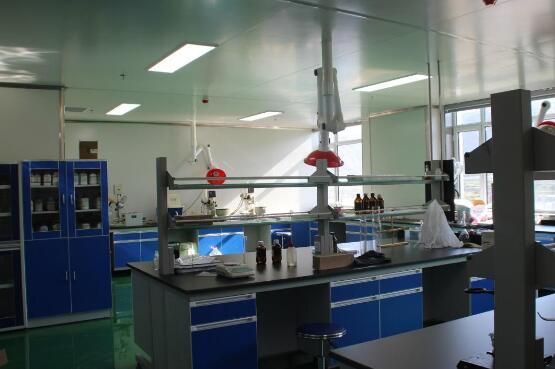Physical and chemical detection
(1) Phthalate
O-phenyl two formate as a plasticizer for polymer materials such as plastics is widely used in electronics, toys, food packaging materials, medical blood bags and hose, vinyl floor and wallpaper, cleaners, lubricants, personal care products (such as nail polish, hair spray, soap and shampoo) and hundreds of other products. But it can interfere with endocrine and has serious harm to human health because it plays a similar role in human body and animal. Therefore, countries strictly control it.
(2) Polycyclic aromatic hydrocarbons
On July 1, 2015, AFPs GS 2014:01 Pak, a new standard for polycyclic aromatic hydrocarbon control of GS certified products in Germany, came into effect, while the original standard ZEK 01.4-08 was invalid on June 30. Electronic and electrical products, toys, food contact materials, plastic products, rubber products, machinery and other products that need to apply for GS certification in Germany should meet the new PAHs test requirements. On September 15, 2019, the German Product Safety Council (AFPs) issued a new standard for assessment and testing of polycyclic aromatic hydrocarbons (PAHs) in GS certification, AFPs GS 2019:01 Pak, which will be implemented from July 1, 2020.
(3) Halogen
Halogen of electronic and electrical products generally includes fluorine (f), chlorine (CL), bromine (BR), iodine (I). Halogen has the advantages of flame retardant, easy to dissolve and high reactivity, so it is commonly used in flame retardant, refrigerant, organic chemical raw materials, bleaching agent, wool degreasing agent, etc.
Application of halogen in electronic and electrical products: halogen flame retardant. Common halogen flame retardants include polybrominated biphenyls, polybrominated diphenyl ethers, tetrabromobisphenol A, polychlorinated biphenyls, polychlorinated terphenyls, polychlorinated naphthalene, hexabromocyclododecane, short chain chloroparaffins, etc.
(4) Other harmful substances
a. Heavy metals
Electronic and electrical products, such as wires, coatings and circuit boards, are full of heavy metals, which are difficult to be biodegraded. On the contrary, heavy metals can be enriched in a hundred times under the biological amplification of the food chain, and finally enter the human body, often causing allergies and damaging the liver, kidney and nervous system of users. Therefore, the control of heavy metals in electronic and electrical products is particularly strict.
b. Asbestos
Asbestos is a general term for natural fibrous siliceous minerals, which belongs to silicate. It is a kind of material with fibrous crystalline structure, containing magnesium, iron, aluminum, sodium and other oxides and binding silica. Asbestos fibers are scattered in the air as dust and inhaled into the human body, which will adhere and deposit in the lungs, leading to organ canceration.
In 2009, China implemented the method for determination of asbestos content in products (GB / T 23263-2009), which is applicable to the determination of asbestos content in building materials, friction materials, sealing materials, thermal insulation materials and non-metallic minerals. The 1999 / 77 / EC directive issued by the European Union in 1999 clearly limits the use of crocidolite, chrysotile, chrysotile, chrysotile, chrysotile, actinolite and tremolite, which has been included in Annex XVII of reach regulation. The United States has restricted the use of asbestos since 1971, and banned the production and use of asbestos and asbestos products in 1992. Japan has banned the use of asbestos products since 2008.
c. PFOS
In 2009, the EU's restriction requirements on perfluorooctane sulfonic acid (PFOS) were listed in the restriction list of annex XVII of EU REACH regulation. Later, due to the revision of POPs regulation in EU (EU) no 757 / 2010 and higher restriction requirements, the restriction in reach was deleted in 2011.
d. Requirements of European pops regulations on PFOS
*Substance or mixture: PFOS ≤ 10 mg / kg
*Articles (including finished products, semi-finished products and parts): PFOS ≤ 1000 mg / kg
*Textile or other coating materials: PFOS < 1 µ g/m2

National hotline: 400-882-9628
Ms. Lao 17724720714
Email: Christina_ bst_ lab@163.com
Shenzhen headquarters: Beitong testing building, Chaomei Industrial Park, Donghaidao, Yantian Comprehensive Bonded Zone, Yantian District, Shenzhen
© 2021 Shenzhen Beitong Testing Co., Ltd(www.bst-iab.com)All Rights Reserved.